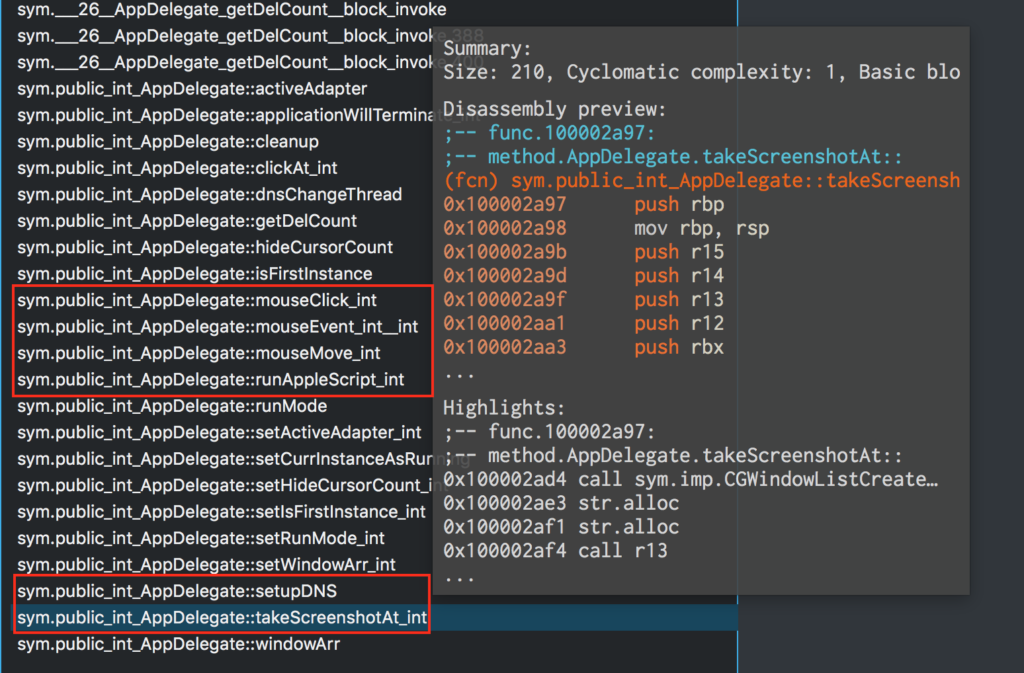
But there’s something about a trojan virus, the way it sneaks onto your computer by hiding in something that looks legitimate that makes it even more upsetting.
#DR CLEANER MAC OS SPY TROJAN MAC#
But to help you do it all by yourself, we’ve gathered our best ideas and solutions below.įeatures described in this article refer to the MacPaw site version of CleanMyMac X.ĭiscovering your Mac is infected with any kind of virus can be distressing.
#DR CLEANER MAC OS SPY TROJAN DOWNLOAD#
“We know they don’t discriminate against plastic,” she said, adding that the team is also keen to learn whether fibers can snarl planktons’ appendages and interfere with their drifting.So here's a tip for you: Download CleanMyMac to quickly solve some of the issues mentioned in this article. Halsband suspects they might be consuming the castoffs. Ehlers said she would also like to see the team document how local creatures are interacting with the microfibers.ĭr. But they said it would benefit from chemical analysis, too, a sentiment echoed by Sonja Ehlers, a microplastics researcher at the University of Koblenz-Landau in Germany. Heavier ones would sink to the bottom or cluster near the sewage pipe or inner shore, places that are habitats for plankton, bivalves and bloody-red worms.ĭeonie and Steve Allen, married microplastics researchers at the University of Strathclyde in Scotland and Dalhousie University in Nova Scotia, praised the paper’s model and said in an email that its “really local and timely field data and sampling” bolster its results. The researchers calculated that the lightest microfibers would stay suspended near the surface and leave the fjord within days, dispersing in roomier waters. To start puzzling out what happens to the bits in Adventfjorden, the team modeled where the microfibers could accumulate and which species might encounter them.

(Previous research found that outerwear such as synthetic fleece tends to shed microfibers in washing machines.)įrom these counts, the researchers estimated that the community flushes at least 18 billion microfibers into the fjord each year - roughly 7.5 million per person. Still, scores of pieces remained, including dark colors likely from outdoor gear - especially in the September samples, collected “when the hunters start to emerge” and bundle up, Dr.

Lacking equipment that could identify fibers as synthetic or organic, the team discarded anything clear or white that might be cellulose. The findings, published this summer in the journal Frontiers in Environmental Science, highlight the hidden impacts that Arctic communities can have on surrounding waters, as well as the major microfiber emissions that can be produced by even small populations through untreated sewage.īack in the lab, researchers filtered and sorted the samples.

While the precise impact of microfibers building up in ecosystems remains a topic of debate, tiny Longyearbyen expels an extraordinary amount of them in its sewage: A new study shows that the village of thousands emits roughly as many as all the microplastics emitted by a wastewater treatment plant near Vancouver that serves around 1.3 million people. Ross, an ocean pollution scientist who has studied the plastic fouling the Arctic. Microfibers are turning up everywhere, and among researchers, there’s growing recognition that sewage is helping to spread them, said Peter S.

The fjord has a sizable problem with subtle trash - namely microfibers, a squiggly subset of microplastics that slough off synthetic fabrics. “People see this nice, clean, white landscape,” said Claudia Halsband, a marine ecologist in Tromso, Norway, “but that’s only part of the story.” From the village of Longyearbyen, visitors and roughly 2,400 residents can appreciate the stark terrain around the fjord known as Adventfjorden.īut the beauty of this Arctic inlet conceals messier, microscopic secrets. Svalbard, a Norwegian archipelago chilling halfway between the Nordic country and the North Pole, is known as much for its rugged beauty as its remoteness.


 0 kommentar(er)
0 kommentar(er)
